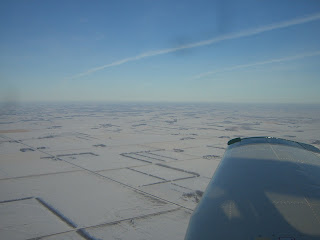For a person looking to get into flight training they almost always think that they will have to rent an airplane to do their training in. However I've started thinking that there might be a better option. Of course the key word here is might, depending on how things work out it could actually cost you more money.
So the question is "I'm looking to start my private pilot training, would it be better for me to rent an airplane for the duration or possibly purchase an aircraft?" I'm going to do my best to break it down for you.
I in no way am certain with my figures, they are my rough opinions based on information I've gathered. I'm sure there are associated costs that I'm unaware of.
Renting (assuming minimum times)
35 hours dual
15 hours solo
5 hours ground instruction
flight kit
----------------------
$6,000 - $10,000.
Buying (assuming minimum times)
Average price for C152 - $30,000
35 hours dual @ $40/per hour - $1,400
15 hours solo @ $0/per hour - $0
5 hours ground instruction @ 40/per hour - $200
Gas for 50 hours @4.00 - $200
Inspections/hanger fees - $3,000
Flight kit - $329
--------------------------------------------------------
$35,129So now your saying, okay this guys a moron how could he even thought that this could be cheaper than renting. SO in my defense here are the kickers, notice I said
kickerS. How many people who want to learn to fly have talked about it with someone else who was also interested. I would guess most. In fact I would bet you could head to your local
FBO and run into someone interested on a nice weekend day. Okay so lets reconfigure now with kicker number 1.
$35,129/2 =
$17,564.50Okay so cheaper but still, at best, your only saving $7,500. So here comes kicker number two. If your only planing on using your private sporadically and would actually prefer to rent an aircraft a couple times a month here is your chance to get your money back and possibly even make money. Remember what you payed for when you bought the airplane originally? $30,000 right, okay lets assume the market for Cessna 152's has gone down. Now you can only sell the airplane for $25,000. Lets do the math:
$25,000/2 = $12,500. $17,565.50 - $12,500 =
$5,064.50 (Cheaper then renting)
But wait, lets assume the market for your plane actually got better. You now are able to sell the plane for $40,000. Lets do the math:
$40,000/2 = $20,000. $17,565.50 - $20,000 =
+$2434.50 (you just got your private and made $2500.)Find another friend and your costs go down. Just something to think about.


























